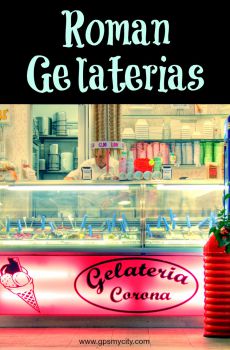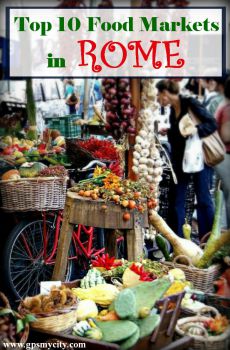
Tempio del Divo Giulio (Temple of Divus Julius), Rome
The Temple of Divus Iulius, also known as the Temple of Caesar or the Temple of the Deified Julius Caesar, is an ancient structure located in the Roman Forum. Its construction was initiated in 42 BC by the triumvirs Octavian, Antony, and Lepidus, following the posthumous deification of Julius Caesar by the Senate. However, it was ultimately completed by Octavian alone. On August 18, 29 BC, Octavian, who later became Emperor Augustus, dedicated the prostyle temple to his adoptive father Caesar. This dedication formed part of the triple triumph celebrating Octavian's victory over Antony and Cleopatra.
Situated on the eastern side of the main square of the Roman Forum, the Temple of Divus Iulius occupies the site where Caesar was cremated. The precise plan of the temple is not available in the Imperial Forma Urbis, an ancient map of Rome. However, surviving fragments on slabs V-11, VII-11, VI-6, and other sources offer insights into the layout of the surrounding area, including the Regia, the Temple of Castor and Pollux, the Fons and Lacus Iuturnae, the Basilica Iulia, and the Basilica Aemilia.
The specific column order employed in the construction of the temple remains uncertain. Depictions on ancient coins suggest that the columns may have been Ionic or composite. However, archaeologists have discovered fragments of Corinthian pilaster capitals at the site. Some scholars propose that the temple featured an Ionic pronaos (porch) combined with Corinthian pilasters on the cella walls, particularly at the corners. Conversely, others argue that the entire temple followed a Corinthian style, considering the coin evidence to be inaccurate representations of Corinthian columns.
It is important to note that the classification between Corinthian and composite columns is a distinction made in the Renaissance period and not in ancient Rome. In Roman architecture, Corinthian and composite orders were considered part of the same architectural order. The use of the composite style was prevalent in civil buildings and the exteriors of triumphal arches, while temples more commonly featured Corinthian columns. Numerous temples and religious buildings from the Augustan Age followed the Corinthian style, such as the Temple of Mars Ultor and the Maison Carrée in Nîmes, among others.
Situated on the eastern side of the main square of the Roman Forum, the Temple of Divus Iulius occupies the site where Caesar was cremated. The precise plan of the temple is not available in the Imperial Forma Urbis, an ancient map of Rome. However, surviving fragments on slabs V-11, VII-11, VI-6, and other sources offer insights into the layout of the surrounding area, including the Regia, the Temple of Castor and Pollux, the Fons and Lacus Iuturnae, the Basilica Iulia, and the Basilica Aemilia.
The specific column order employed in the construction of the temple remains uncertain. Depictions on ancient coins suggest that the columns may have been Ionic or composite. However, archaeologists have discovered fragments of Corinthian pilaster capitals at the site. Some scholars propose that the temple featured an Ionic pronaos (porch) combined with Corinthian pilasters on the cella walls, particularly at the corners. Conversely, others argue that the entire temple followed a Corinthian style, considering the coin evidence to be inaccurate representations of Corinthian columns.
It is important to note that the classification between Corinthian and composite columns is a distinction made in the Renaissance period and not in ancient Rome. In Roman architecture, Corinthian and composite orders were considered part of the same architectural order. The use of the composite style was prevalent in civil buildings and the exteriors of triumphal arches, while temples more commonly featured Corinthian columns. Numerous temples and religious buildings from the Augustan Age followed the Corinthian style, such as the Temple of Mars Ultor and the Maison Carrée in Nîmes, among others.
Want to visit this sight? Check out these Self-Guided Walking Tours in Rome. Alternatively, you can download the mobile app "GPSmyCity: Walks in 1K+ Cities" from Apple App Store or Google Play Store. The app turns your mobile device to a personal tour guide and it works offline, so no data plan is needed when traveling abroad.
Tempio del Divo Giulio (Temple of Divus Julius) on Map
Sight Name: Tempio del Divo Giulio (Temple of Divus Julius)
Sight Location: Rome, Italy (See walking tours in Rome)
Sight Type: Attraction/Landmark
Guide(s) Containing This Sight:
Sight Location: Rome, Italy (See walking tours in Rome)
Sight Type: Attraction/Landmark
Guide(s) Containing This Sight:
Walking Tours in Rome, Italy
Create Your Own Walk in Rome
Creating your own self-guided walk in Rome is easy and fun. Choose the city attractions that you want to see and a walk route map will be created just for you. You can even set your hotel as the start point of the walk.
Rome Introduction Walking Tour II
Rome, the Eternal City, carries a legacy shaped by centuries of resilience, transformation, and cultural flourishing. The fall of the Roman Empire in 476 AD marked the end of an era, plunging Western Europe into the dark Middle Ages. Yet, even amid the disarray, Rome endured as a beacon of unity, largely due to its status as the center of Catholicism. The papacy wielded spiritual influence,... view more
Tour Duration: 2 Hour(s)
Travel Distance: 3.4 Km or 2.1 Miles
Tour Duration: 2 Hour(s)
Travel Distance: 3.4 Km or 2.1 Miles
Vatican Walking Tour
Consisting of a walled enclave within the city of Rome, the Vatican is the world’s smallest sovereign state, as well as a symbol (and headquarters) of the Roman Catholic faith. Although only 44 hectares in surface, one is amazed by the vastness of this place and the sheer size of everything. When gazing around in all directions, you realize how much can be achieved by people working in faith for... view more
Tour Duration: 2 Hour(s)
Travel Distance: 3.4 Km or 2.1 Miles
Tour Duration: 2 Hour(s)
Travel Distance: 3.4 Km or 2.1 Miles
Rome Introduction Walking Tour I
Often referred to as the Eternal City, Rome holds a unique place in the story of Western civilization. Its influence shaped European culture through language, governance, and monumental architecture.
The name “Rome” originates from Romulus, the mythical founder of the city, who, according to legend, was the son of the war god Mars and Rhea Silvia, the priestess of goddess Vesta. Both,... view more
Tour Duration: 2 Hour(s)
Travel Distance: 3.3 Km or 2.1 Miles
The name “Rome” originates from Romulus, the mythical founder of the city, who, according to legend, was the son of the war god Mars and Rhea Silvia, the priestess of goddess Vesta. Both,... view more
Tour Duration: 2 Hour(s)
Travel Distance: 3.3 Km or 2.1 Miles
Fountains and Squares Walking Tour
In Rome there is a lively piazza round almost every corner, each with its own unique atmosphere and its own story to tell. These public squares have been the center of Roman culture for centuries, and some of the city’s most popular attractions are located within them.
Most piazzas have a fountain in the center and a lot of cafes around. In fact, Rome holds the largest number of fountains in... view more
Tour Duration: 2 Hour(s)
Travel Distance: 4.1 Km or 2.5 Miles
Most piazzas have a fountain in the center and a lot of cafes around. In fact, Rome holds the largest number of fountains in... view more
Tour Duration: 2 Hour(s)
Travel Distance: 4.1 Km or 2.5 Miles
Trastevere Walking Tour
Heading down from the Vatican along the River Tiber, one is bound to find yet another city hidden within the city – Trastevere. This name translates literally to "across the Tiber". Indeed, crossing the picturesque Ponte Sisto (Sisto Bridge) to the west bank, you will find yourself in a charming neighborhood with a distinct character that sets it apart from any other part of Rome.
... view more
Tour Duration: 2 Hour(s)
Travel Distance: 2.9 Km or 1.8 Miles
... view more
Tour Duration: 2 Hour(s)
Travel Distance: 2.9 Km or 1.8 Miles
Spanish Steps to Trevi Fountain
An established tourist mecca, today's Rome is hardly imaginable without two of its much loved attractions – the Spanish Steps and the Trevi Fountain. Magnets for tourists as they are, these two sights are connected to a number of other, not less worthy of attention locations, such as the Fountain of the Longboat or Piazza Colonna and its centerpiece, the Column of Marcus Aurelius, to... view more
Tour Duration: 1 Hour(s)
Travel Distance: 2.0 Km or 1.2 Miles
Tour Duration: 1 Hour(s)
Travel Distance: 2.0 Km or 1.2 Miles
Useful Travel Guides for Planning Your Trip
Souvenirs Shopping: 15 Authentic Italian Things To Buy in Rome
Rome is the Eternal City and, as such, the list of gift options available here is countless. Whether it's something edible, drinkable, wearable or pleasing to the eye that you want - you will find it all here in abundance. However, if time or budget is the factor, perhaps you might want to...
17 Best Gelaterias in Rome Italy
For ice cream lovers and dabblers this guide is a treasure chest of Rome’s best gelato shops. There are gelaterias everywhere. Many visitors to Rome only have a few days to explore the city. You owe it to yourself to make the most of your time and find the gelato locals eat. Often the authentic...
10 Best Food Markets in Rome Italy
Of all the things Italy is most famous for (cars, music, fashion, movies, etc.), food is, undoubtedly, top of the list. Rome may well not be the whole Italy, but no Italy is whole without Rome... And the Romans, much as all their fellow-Italians, like it "fresco", hence the abundance of...









